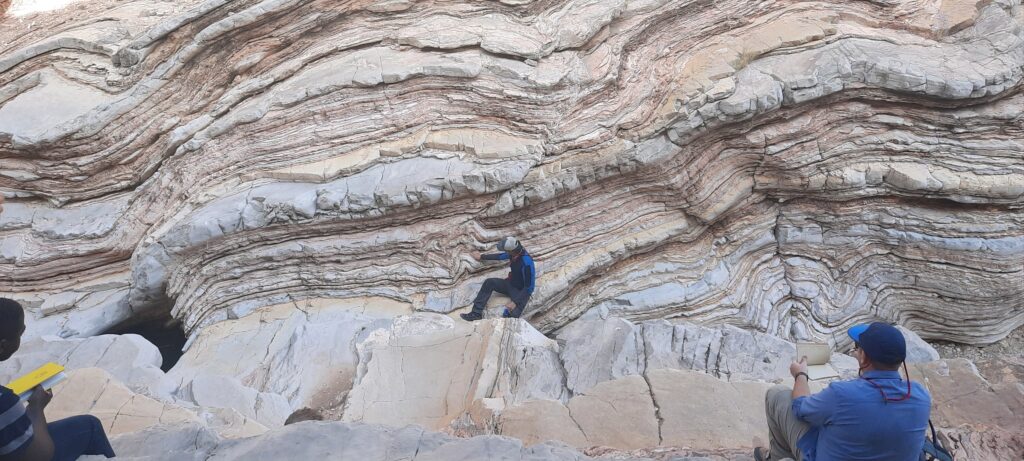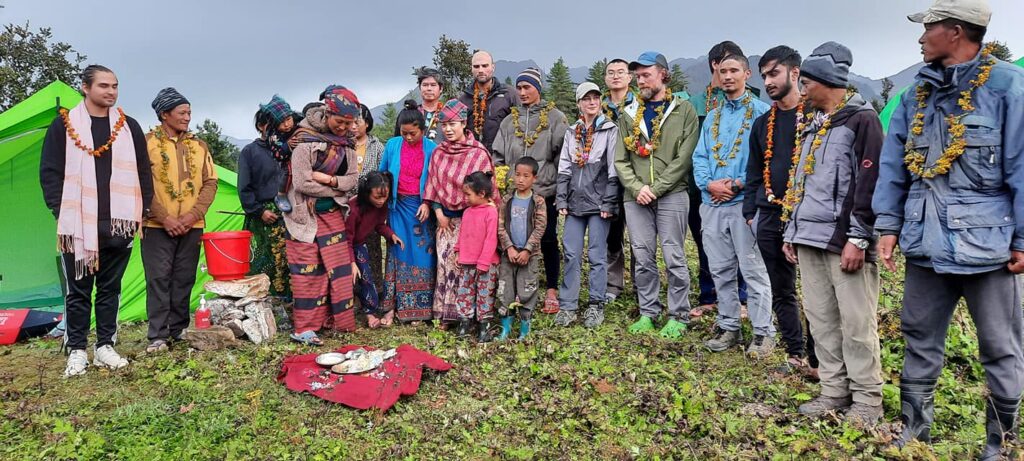Reading the rocks: A Q&A with SIT Nepal professor Mike Murphy
May 14th, 2024 | Faculty, SIT Study Abroad
Dr. Mike Murphy is a committed educator in the field of geology at the University of Houston and an expert in the structure and tectonics of Tibet and the Himalaya. For the past 24 years, he has inspired university-level students to explore the earth’s geological wonders in the U.S. Rocky Mountain region and has recently contributed his expertise to projects focused on understanding earthquakes in Nepal.
Murphy will serve as a faculty member for the SIT Nepal: Geoscience in the Himalaya program taking place this summer. We asked him about what drew him to SIT, why Nepal is an optimal place to learn geoscience, and what experiential learning means to him.

What is your educational/professional background, and what drew you to SIT?
I had the great fortune of attending the University of California, Los Angeles (UCLA). I started as a biochemistry major who wandered into the geology building only to find opportunities that linked me to my passions in science and art. After completing my PhD in 2000 I was offered a position at the University of Houston (UH) following work experience in geotechnical engineering and petroleum exploration. At UH I have enjoyed conducting research with my undergraduate and graduate students in Tibet, Sichuan, Nepal, Mexico, and the Rocky Mountains. Since 2001 I have been teaching field geology in the Rocky Mountains from New Mexico in the south to Montana in the north.
I want my students to be able to “read” the rocks. In other words, they will graduate with skills to observe and survey a region that allows them to reconstruct its geologic history.
The experiences we have had have been life-changing and are what drew me to teaching field geology. I know how impactful it can be. SIT offers the same courses I teach but in the magical country of Nepal. The logistical planning is first-class, making travel enjoyable and easy to absorb the breathtaking views, the spectacular geology, and the people and their culture.

What brought you to the field of geoscience?
I grew up in southern California with a daily routine of exploring the hills and creeks in my backyard. Weekends were spent camping with my family where my deep interest in the sciences started. I wanted to understand the environment around me, what I was seeing and why it was there. I was hooked on geology after my first field course in Rainbow Basin, California. I learned that geology was unlike the other sciences. In geology, the experiment has already been run: the earth formed and plate tectonics initiated, which continues to shape the planet. Geology is more akin to forensic science, where we operate as detectives, reading the clues in the rocks that we use to construct histories from and base interpretations of the biology, chemistry, and physics that operate to generate what we observe.
I most look forward to new experiences and discoveries with the class. My goal is that several students will leave with an interest in future research and a desire to return to Nepal.
My outdoor activities escalated in college. I spent way too much time rock climbing. After mastering the local crags in southern California and clawing my way up several big walls in Yosemite Valley, I wanted to go further in my education. My skills in field geology and climbing were well known to UCLA professors, and I was invited by the late Dr. An Yin to join his research expedition to Tibet in 1995. The following 12 field expeditions to Tibet and Nepal are novels in themselves. The last 24 years in geosciences have been spent sharing my skills and experiences with geology students and working with them to find opportunities that get them where they want to go.

Why would you recommend studying in Nepal?
Nepal is probably not like any place you have been. The people are so genuinely friendly and have an intoxicating passion for exploring their landscape. Our expedition will take us straight through the heart of the Himalaya from the bottom to the top. The people, vegetation, architecture, and religions shift throughout this journey. The rocks and landscape we will work with serve as the classic modern-day example of continent-continent collisions, the main process by which supercontinents are made. I cannot think of a more welcoming place to learn about how mountain landscapes form.
What do you hope students learn from your course?
I want my students to be able to “read” the rocks. In other words, they will graduate with skills to observe and survey a region that allows them to reconstruct its geologic history.
The Nepal program emphasizes geoscience themes in geologic hazards and societal impact. These are thriving and growing sectors of the government and private industry that need geoscientists. I want my students to have the skills to assess geologic hazards and be competitive for jobs in this sector.

SIT is known for experiential learning. What does that mean to you?
Experiential learning to me means that you will learn by seeing and doing. It means that we will be working together in the field. It means that I will expect to lecture in the field next to the rocks. I expect to show you and then you will show me how to make field measurements. It means that at the end of the trip, we both have the confidence that you can carry out accurate and meaningful fieldwork in whatever field you pursue.
Nepal is probably not like any place you have been. The people are so genuinely friendly and have an intoxicating passion for exploring their landscape.
What are you most looking forward to during your time as a faculty member?
I can’t wait to work with my fellow instructors. We have similar passions for sharing our knowledge with students. I also can’t wait to see Bhairab who oversees the ground team. He is a phenomenal mountain guide and a logistics extraordinaire. I have not worked with him since 2001. As a faculty member though, I most look forward to new experiences and discoveries with the class. My goal is that several students will leave with an interest in future research and a desire to return to Nepal.
